Best Vector Programming Resources to Buy in January 2026
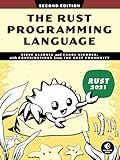
The Rust Programming Language, 2nd Edition


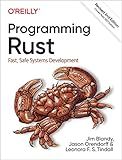
Programming Rust: Fast, Safe Systems Development



Learn Rust Through Projects: 10 Rust Projects That Teach You Everything



Rust in Action


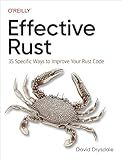
Effective Rust: 35 Specific Ways to Improve Your Rust Code


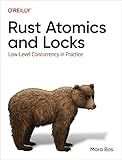
Rust Atomics and Locks: Low-Level Concurrency in Practice


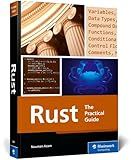
Rust Programming: A Practical Guide to Fast, Efficient, and Safe Code with Ownership, Concurrency, and Web Programming (Rheinwerk Computing)



Command-Line Rust: A Project-Based Primer for Writing Rust CLIs


Working with vectors in Rust involves utilizing the Vec<T> type provided by the standard library. Here are the basic concepts of working with vectors:
- Creating a Vector: To create an empty vector, use the Vec::new() function. let empty_vector: Vec = Vec::new(); To create a vector with initial values, use the vec! macro. let vector = vec![1, 2, 3];
- Adding Elements: You can add elements to a vector using the push method. let mut vector = Vec::new(); vector.push(1); vector.push(2); vector.push(3); Alternatively, you can also use the extend method to add multiple elements from another collection. let mut vector = vec![1, 2, 3]; vector.extend([4, 5]);
- Accessing Elements: You can access elements in a vector using indexing syntax. let vector = vec![10, 20, 30]; let first_element = vector[0]; let third_element = vector[2]; It is advisable to use get method when you're not certain if the index is valid. let vector = vec![10, 20, 30]; if let Some(first_element) = vector.get(0) { println!("{}", first_element); }
- Updating Elements: To update an element at a specific index, assign a new value using indexing syntax. let mut vector = vec![10, 20, 30]; vector[1] = 25;
- Removing Elements: You can remove elements using the remove method, which takes an index as an argument. let mut vector = vec![10, 20, 30]; let removed_element = vector.remove(1); Another way to remove elements is using the pop method, which removes the last element and returns it. let mut vector = vec![10, 20, 30]; let removed_element = vector.pop();
- Iterating over Elements: You can iterate over the elements of a vector using a for loop or an iterator method like iter() or iter_mut(). let vector = vec![10, 20, 30]; for element in &vector { println!("{}", element); }
These are some of the fundamental operations you can perform when working with vectors in Rust. Vectors offer dynamic resizing and provide flexibility to store and manipulate sequences of elements.
What is the method to convert a vector to a set in Rust?
To convert a vector to a set in Rust, you can simply use the collect() method with a parameter specifying the desired collection type.
Here's an example:
use std::collections::HashSet;
fn main() { let vector = vec![1, 2, 3, 4, 5];
let set: HashSet<\_> = vector.into\_iter().collect();
println!("{:?}", set); // Prints: {1, 2, 3, 4, 5}
}
In the example above, we convert the vector vector into a HashSet by calling into_iter() on the vector to obtain an iterator, and then collect() on that iterator. The type annotation HashSet<_> is used to specify the desired output type.
Note that into_iter() consumes the original vector, so it cannot be used afterwards. If you want to keep the vector as well, you can use iter() instead of into_iter() to create a non-consuming iterator.
How to get a slice of elements from a vector in Rust?
To get a slice of elements from a vector in Rust, you can use the slice method. Here's an example:
fn main() { let vector = vec![1, 2, 3, 4, 5];
// Get a slice from index 1 to index 3 (exclusive)
let slice = &vector\[1..3\];
println!("{:?}", slice); // Output: \[2, 3\]
}
In this example, the slice variable is a reference to a slice of elements from the vector. The range 1..3 specifies the start and end indices of the slice (excluding the end index).
The resulting slice can be used like any other slice in Rust, allowing you to perform operations on that subset of elements.
What is the function to compare two vectors for equality in Rust?
The function to compare two vectors for equality in Rust is the == operator.
What is the function to check if a specific element is present in a vector?
The function to check if a specific element is present in a vector depends on the programming language you are using. Here are some examples:
In C++:
The std::find function from the <algorithm> header can be used to check if an element is present in a vector. It returns an iterator pointing to the found element, or vector.end() if the element is not found.
Example:
#include #include #include
int main() { std::vector numbers = {1, 2, 3, 4, 5};
// Check if 3 is present in the vector
if (std::find(numbers.begin(), numbers.end(), 3) != numbers.end()) {
std::cout << "3 is present in the vector." << std::endl;
} else {
std::cout << "3 is not present in the vector." << std::endl;
}
return 0;
}
In Python:
The in operator can be used to check if an element is present in a list (which is similar to a vector in C++).
Example:
numbers = [1, 2, 3, 4, 5]
Check if 3 is present in the list
if 3 in numbers: print("3 is present in the list.") else: print("3 is not present in the list.")
In Java:
The contains method of the ArrayList class can be used to check if an element is present in a vector (implemented as ArrayList in Java). It returns true if the specified element is found in the list, otherwise false.
Example:
import java.util.ArrayList;
public class Main { public static void main(String[] args) { ArrayList numbers = new ArrayList<>(); numbers.add(1); numbers.add(2); numbers.add(3); numbers.add(4); numbers.add(5);
// Check if 3 is present in the vector
if (numbers.contains(3)) {
System.out.println("3 is present in the vector.");
} else {
System.out.println("3 is not present in the vector.");
}
}
}
These are just a few examples, and the approach may vary depending on the programming language you are using.
What is the method to truncate a vector to a specific length in Rust?
In Rust, you can use the truncate() method to truncate a vector to a specific length. The truncate() method takes a single argument, which is the desired length of the vector after truncation. Here's an example usage:
fn main() { let mut vec = vec![1, 2, 3, 4, 5];
vec.truncate(3);
println!("{:?}", vec); // Output: \[1, 2, 3\]
}
In this example, the vec.truncate(3) call will reduce the length of the vector vec to 3, effectively truncating it to the first three elements.
